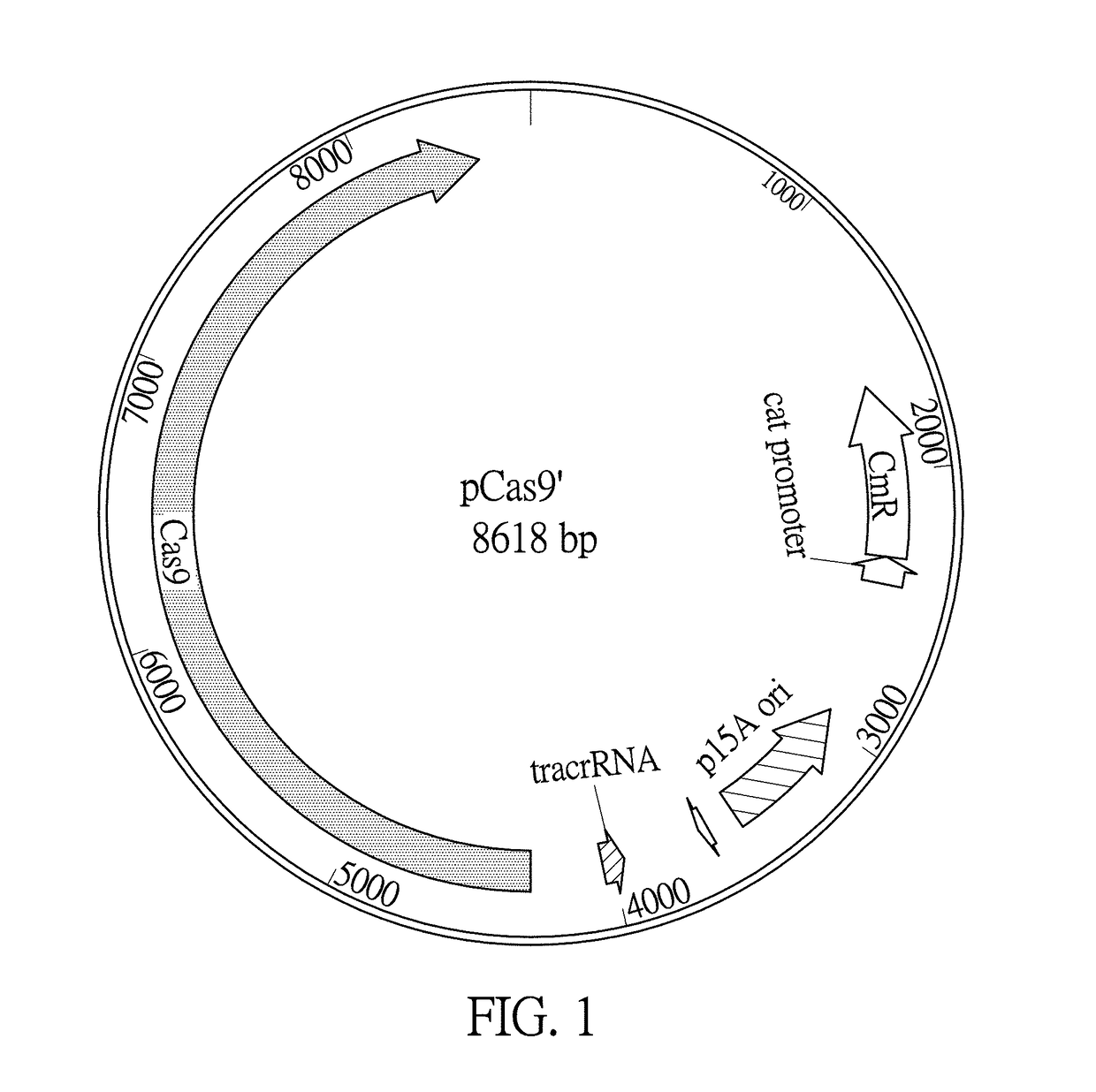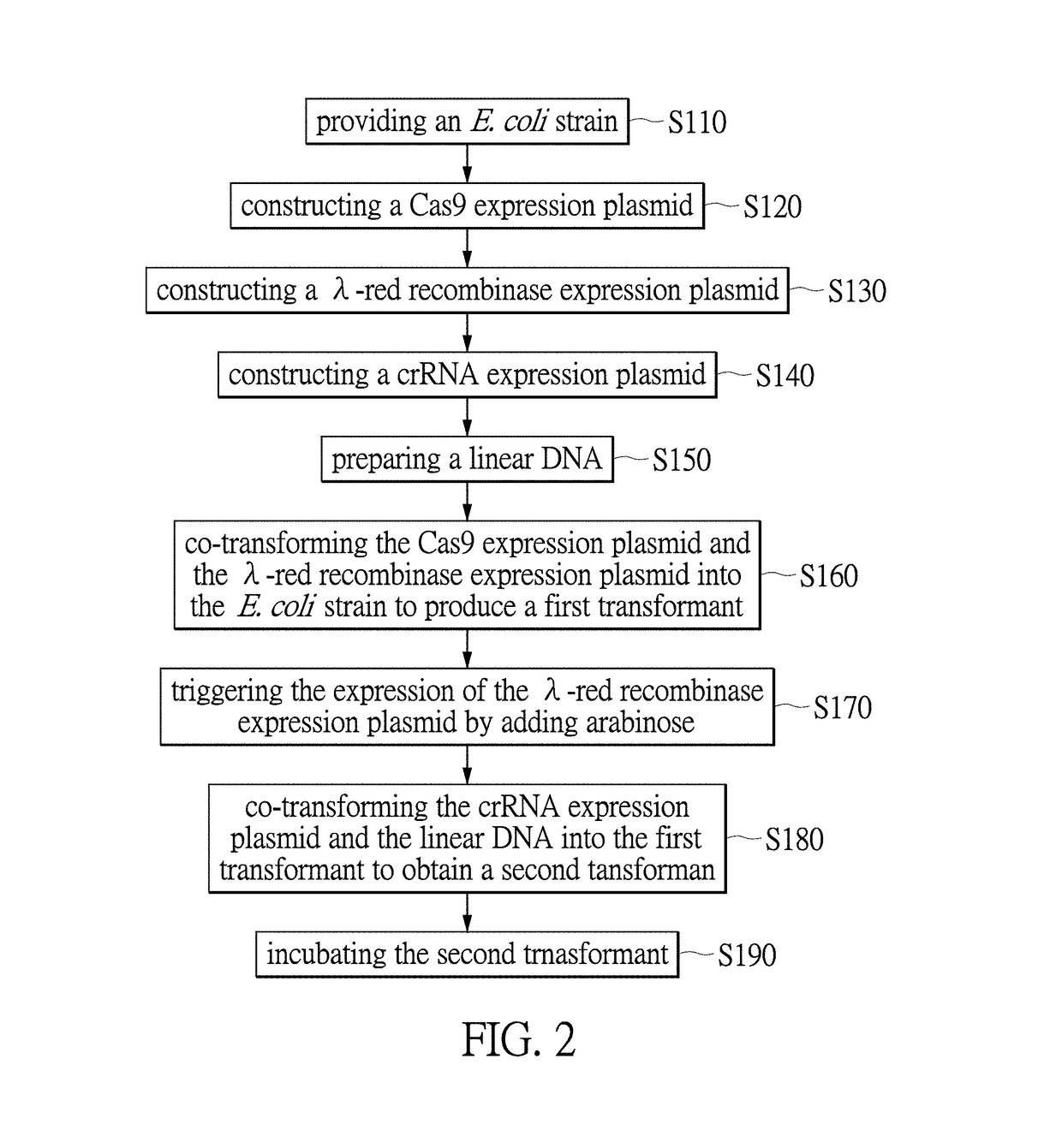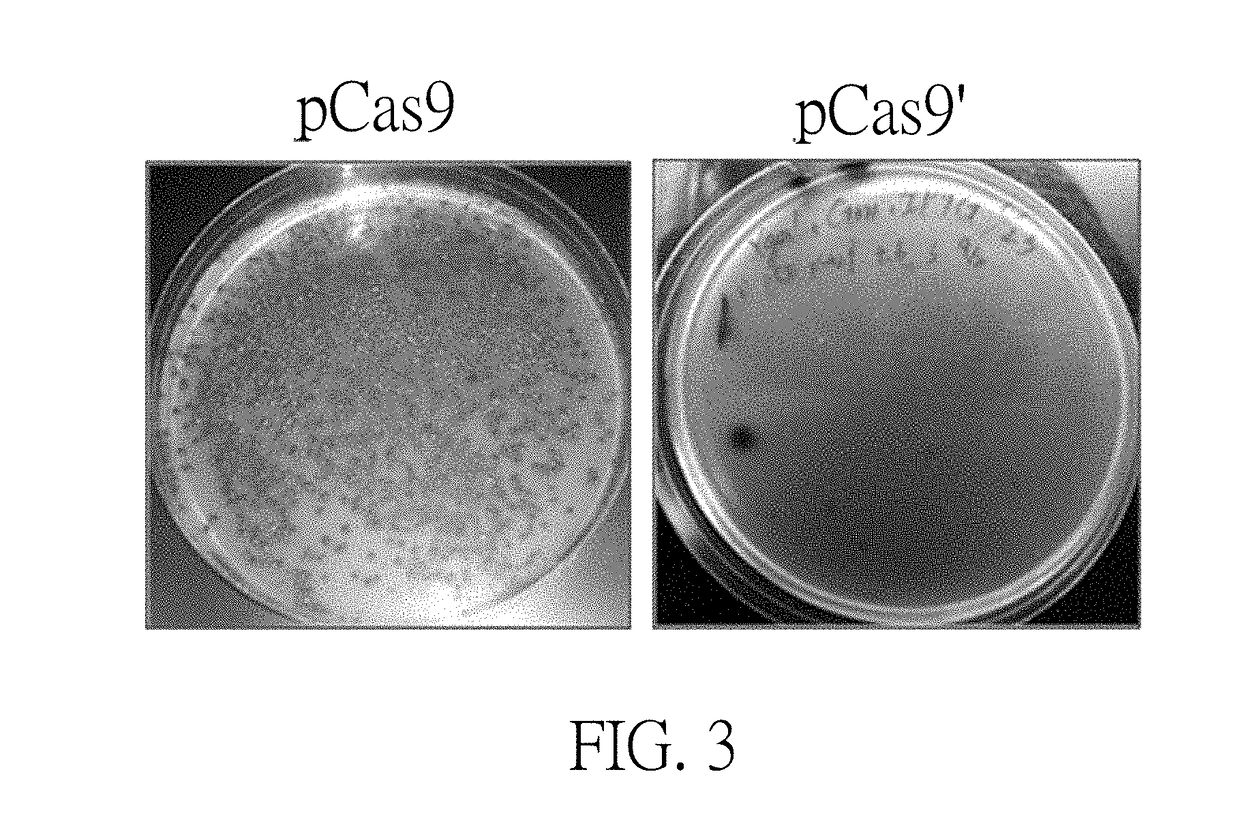Cas9 plasmid, genome editing system and method of escherichia coli
a genome editing and plasmid technology, applied in the field of genome editing system and genome editing method of escherichia coli, can solve the problems of inefficient and long flanking regions, difficult integration of fragments >2,500 bp using 50 bp homology arms, and inefficient dna fragment integration efficiency, etc., to achieve the effect of elevating the efficiency of homologous recombineering
- Summary
- Abstract
- Description
- Claims
- Application Information
AI Technical Summary
Benefits of technology
Problems solved by technology
Method used
Image
Examples
Embodiment Construction
[0031]The term “CRISPR / Cas” herein refers to clustered regularly interspaced short palindromic repeats (CRISPR) and CRISPR associated proteins (Cas9) system. CRISPR / Cas is an innate immune system in bacteria and archaea. In the type II system derived from Streptococcus pyogenes, the CRISPR locus including an array of direct repeats (DRs)-flanking spacer is transcribed into precursor CRISPR RNA (crRNA), which associates with transacting crRNA (tracrRNA) and is processed into mature crRNA / tracrRNA. Acting in concert with the Cas9 nuclease and guided by the spacer sequence, the complex recognizes trinucleotide protospacer-adjacent motif (PAM) and specifically binds to proximal chromosomal complementary sequence (protospacer, 20 bp), after which Cas9 cleaves chromosomal DNA into a double strand break (DSB) within the target DNA in 3-4 nucleotides upstream of the PAM sequence via RuvC-like and HNH nuclease domains of Cas9. The Cas9 HNH nuclease domain cleaves the complementary strand, wh...
PUM
| Property | Measurement | Unit |
|---|---|---|
| pore size | aaaaa | aaaaa |
| temperature | aaaaa | aaaaa |
| volume | aaaaa | aaaaa |
Abstract
Description
Claims
Application Information
 Login to View More
Login to View More - R&D
- Intellectual Property
- Life Sciences
- Materials
- Tech Scout
- Unparalleled Data Quality
- Higher Quality Content
- 60% Fewer Hallucinations
Browse by: Latest US Patents, China's latest patents, Technical Efficacy Thesaurus, Application Domain, Technology Topic, Popular Technical Reports.
© 2025 PatSnap. All rights reserved.Legal|Privacy policy|Modern Slavery Act Transparency Statement|Sitemap|About US| Contact US: help@patsnap.com



